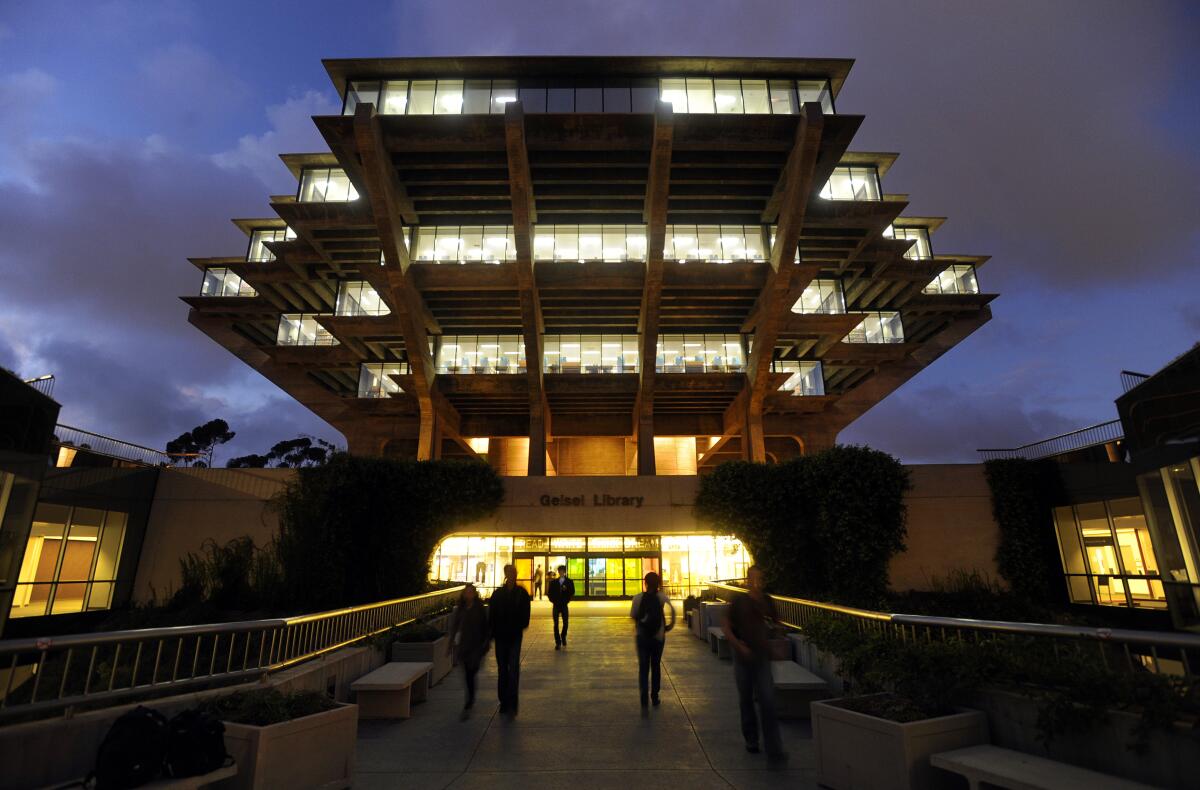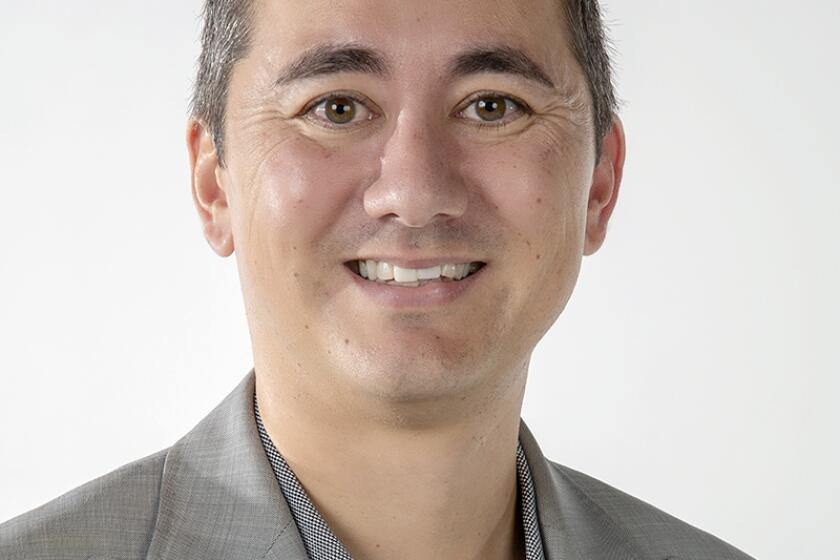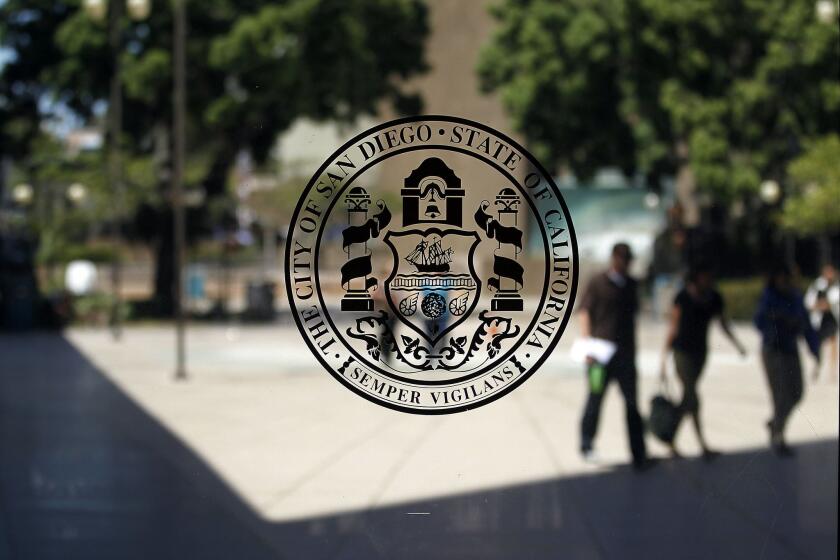UCSD students want to sever political connections with La Jolla to join heavily Asian council district

SAN DIEGO — A group of vocal UC San Diego students is lobbying city officials to sever the school’s longtime political and social connections to La Jolla so the university can align with the Convoy District and nearby areas with significant Asian populations.
The proposal, which is strongly opposed by many La Jolla community leaders, has become the most divisive issue among several in San Diego’s once-a-decade effort to redraw City Council district boundaries.
The proposal to separate La Jolla from UCSD, where Asians are the university’s largest ethnic group at 29%, is propelled by a desire to create a heavily Asian council district.
The students also contend they have more in common with inland areas than high-income La Jolla regarding concerns about affordable housing, transportation and jobs.
Community leaders in La Jolla and Carmel Valley are resisting the proposal, pointing to their longtime ties with the university and geographic connections created by canyons and wildlife reserves in the area.
Several other controversies are part of the redistricting discussions, including a proposal to sharply redraw boundaries in the southern and central parts of the city to create one heavily Black district and two heavily Latino districts.
There’s also an alternative proposal that would create a new district focused on three of San Diego’s main commercial thoroughfares: Adams Avenue, El Cajon Boulevard and University Avenue.
And some smaller issues include requests from Rancho Penasquitos and Linda Vista residents to be reunited. Both those neighborhoods were split among multiple council districts when San Diego last redrew the boundaries in 2011.
Peñasquitos leaders apologize for letter stressing Mira Mesa has lower incomes, more crime
Additional decisions include whether Golden Hill should stay with the city’s central urban areas or join with more diverse southern neighborhoods, and whether eastern and western Mission Valley should continue to be separated.
A volunteer panel helping to redraw the lines is scheduled to decide Tuesday what direction to give a demographic consulting company that will draw up two or three proposed maps and unveil them Oct. 18.
The nine-member panel is scheduled to approve a preliminary map by Nov. 15 and then gather comments about it at five public meetings before a final vote Dec. 15.
Census data received last month show that there have been large enough population shifts since 2011 to require some moderately significant changes to some of the boundaries for San Diego’s nine council districts.
The boundary redrawing process will be compressed, chaotic because census data is delayed
If the lines were left alone, the most populated district — northern coastal District 1 — would be 13% larger than the least populated district — southeastern District 4.
Based on recent court cases focused on voting rights, the difference between the largest and smallest district must be smaller than 10%. The last time San Diego drew its boundaries, the largest difference was less than 4.6%.
The need to shrink District 1 is helping to propel the campaign to remove UCSD, University City and Carmel Valley, which are now included in that district with La Jolla.
Since the district must shrink in some ways to even out the population numbers, proponents say it makes sense to take this opportunity to create an Asian district and allow UCSD students to align with Mira Mesa and Kearny Mesa.
“Although the students of UCSD are a major population in La Jolla, our needs and wants from the community we live, learn and grow in are not considered because of our status,” said student Nicole Muir. “Our voices in local government are stifled by the more pronounced voice of our rich, single homeowner neighbors, who don’t have ill intent in ignoring our pleas, but rather see us as a transient population.”
Asian community leaders support the proposal, which would make the population of newly drawn north-central District 6 more than 42% Asian.
“This district would reflect the breadth and diversity of our community, from the cultural hub in the Convoy District, through residential neighborhoods of all income levels and housing types, to the academic institution that brought so many of us to the region and continues to provide opportunity,” said Kathleen Dang, vice president of a nonprofit Asian advocacy group.
A group called District 1 United is lobbying against the proposal.
“District 1 communities have a 30-year history of working well together,” says the group, which is led by former San Diego Councilmember Sherri Lightner. “They share common interests in coastal access, environmental protection, managed growth, outdoor recreational opportunities, cultural activities, world class education and medical facilities, and dynamic economic enterprises that serve people throughout San Diego and the world.”
The group also calls UCSD a hub for the district, noting that University City and UTC mall were built as companion areas to the sprawling coastal campus.
Another controversial proposal called the Unity Map would redraw the boundaries of Districts 3, 4, 8 and 9 to make District 3 more urban, District 4 include more Black residents and Districts 8 and 9 include more Latino residents.
Supporters say the goal is giving the city’s Black and Latino residents more concentrated political power, while uniting communities that have more in common with each other.
The proposal would require shifting Mount Hope and Ridgeview to District 4, Normal Heights to District 9, Golden Hill to District 8, Southcrest and Shelltown to District 9 and Mission Valley east of Interstate 15 to District 3.
It also aims to solve the problem of District 3 gaining population since 2011, while Districts 4, 8 and 9 have shrunk.
The most vocal opposition to the proposal has come from some residents of quickly gentrifying Golden Hill, who say they have more in common with neighboring South Park and other communities near downtown than they do with Southeastern San Diego.
A competing vision for that area is called the Mid City Mesa proposal, which would make District 9 more of an east-west district than the north-south district created in 2011. The new district would include much of the commercial portions of Adams Avenue, El Cajon Boulevard and University Avenue.
The proposal would shift Mountain View to District 4, Southcrest to District 8, put all of Normal Heights in District 9 and move into District 9 parts of North Park and University Heights that are north of El Cajon Boulevard and east of Park Boulevard.
There are other smaller issues before the commission, including requests from Rancho Penasquitos and Linda Vista residents to be reunited.
Both neighborhoods were split among multiple council districts when San Diego last redrew the boundaries in 2011.
Peñasquitos leaders apologize for letter stressing Mira Mesa has lower incomes, more crime
Residents in the Park Village section of Rancho Penasquitos, which moved from District 5 to District 6 in 2011, want to be reunited with the rest of District 5.
Linda Vista, which was divided between Districts 2 and 6 in 2011, wants to be reunited and possible connected to Clairemont in District 6.
The boundary redrawing process will be compressed, chaotic because census data is delayed
Additional decisions include whether Golden Hill should stay with the city’s central urban areas or join with more diverse southern neighborhoods, and whether eastern and western Mission Valley should continue to be separated.
For details on the boundary drawing process, visit the redistricting commission website.
More to Read
Sign up for Essential California
The most important California stories and recommendations in your inbox every morning.
You may occasionally receive promotional content from the Los Angeles Times.













